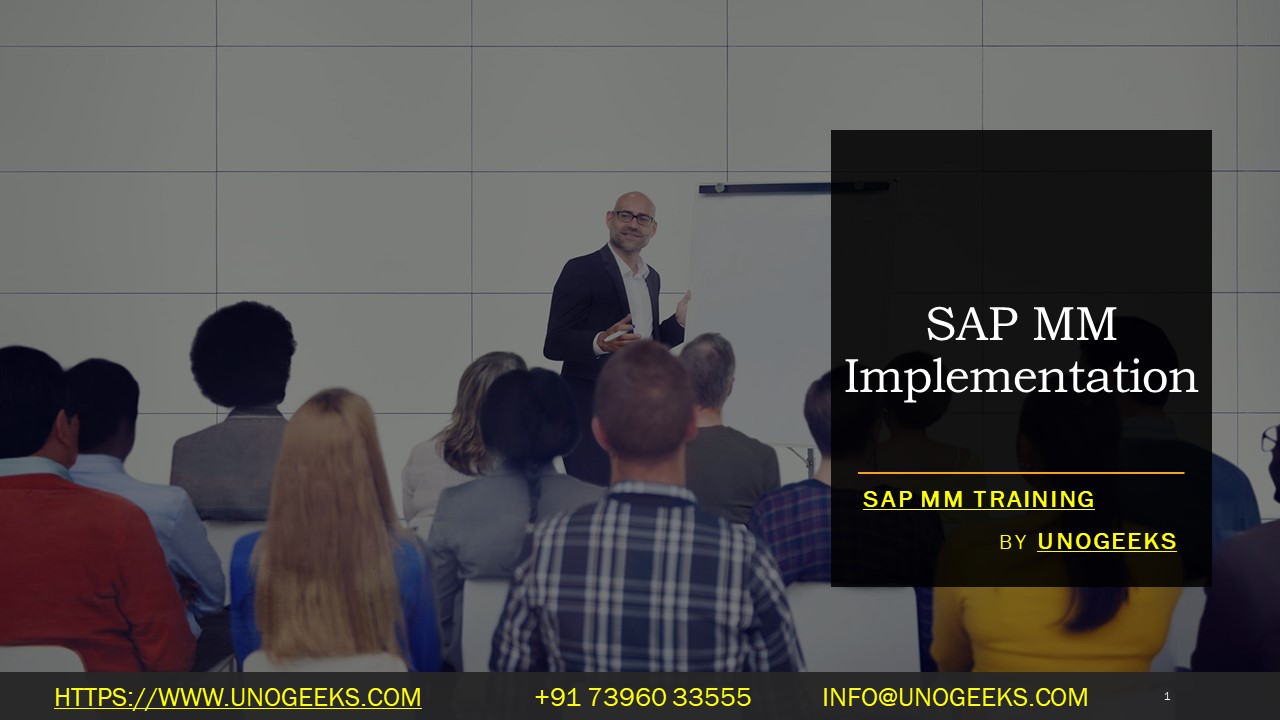SAP MM Implementation
Implementing SAP Materials Management (MM) is a transformative undertaking for any organization. Done well, it streamlines procurement, optimizes inventory management, and enhances supply chain efficiency. This blog outlines the key stages and considerations for a successful SAP MM implementation.
The Implementation Journey
- Project Preparation:
- Define Scope: Clearly outline the business processes and functionalities to be covered by the MM implementation.
- Assemble the Team: Form a cross-functional team with representatives from procurement, finance, IT, and key business areas.
- Choose a Partner: Select an experienced SAP implementation partner if you don’t have extensive in-house expertise.
- Blueprinting:
- Business Process Mapping: Document your existing “as-is” procurement and inventory management processes in detail.
- Gap Analysis: Identify differences between your current processes and standard SAP MM functionality.
- Design the Future State: Create a “to-be” blueprint that outlines how your processes will work in SAP MM, including any necessary customizations.
- Realization:
- System Configuration: Configure SAP MM settings and master data based on your blueprint design.
- Development: If needed, create custom reports, interfaces, or enhancements to align with your specific requirements.
- Testing: Conduct rigorous testing to ensure the system functions as designed and supports your business processes.
- Final Preparation
- Data Migration: Plan and execute the transfer of legacy data (materials, vendors, purchase orders, etc.) into your SAP MM system.
- User Training: Develop comprehensive training materials and programs for end users and key stakeholders across the organization.
- Cutover Planning: Create a detailed plan outlining the steps and timeline for switching from your old system(s) to SAP MM.
- Go-Live & Support
- Go-Live: Execute the cutover and launch your SAP MM system.
- Hypercare: Provide intensive support post go-live to address any issues, questions, and stabilize the new system.
- Post-Implementation Review: Evaluate the project’s successes and identify key areas for ongoing optimization.
- Critical Success Factors
- Clear Project Goals: Define measurable objectives for your implementation (e.g., reduce inventory costs, improve on-time delivery, streamline invoice processing).
- Executive Sponsorship: Secure strong support and buy-in from top management throughout the project.
- Change Management: Proactively manage the impact on people and processes. Plan for effective communication and training.
- Partner Expertise: Choose an implementation partner with proven SAP MM experience and a track record of success in your industry.
- Data Quality: Prioritize data cleansing and migration to ensure reliable system performance from the start.
Conclusion:
Unogeeks is the No.1 IT Training Institute for SAP Training. Anyone Disagree? Please drop in a comment
You can check out our other latest blogs on SAP here – SAP MM Blogs
You can check out our Best In Class SAP Details here – SAP MM Training
Follow & Connect with us:
———————————-
For Training inquiries:
Call/Whatsapp: +91 73960 33555
Mail us at: info@unogeeks.com
Our Website ➜ https://unogeeks.com
Follow us:
Instagram: https://www.instagram.com/unogeeks
Facebook: https://www.facebook.com/UnogeeksSoftwareTrainingInstitute
Twitter: https://twitter.com/unogeek
